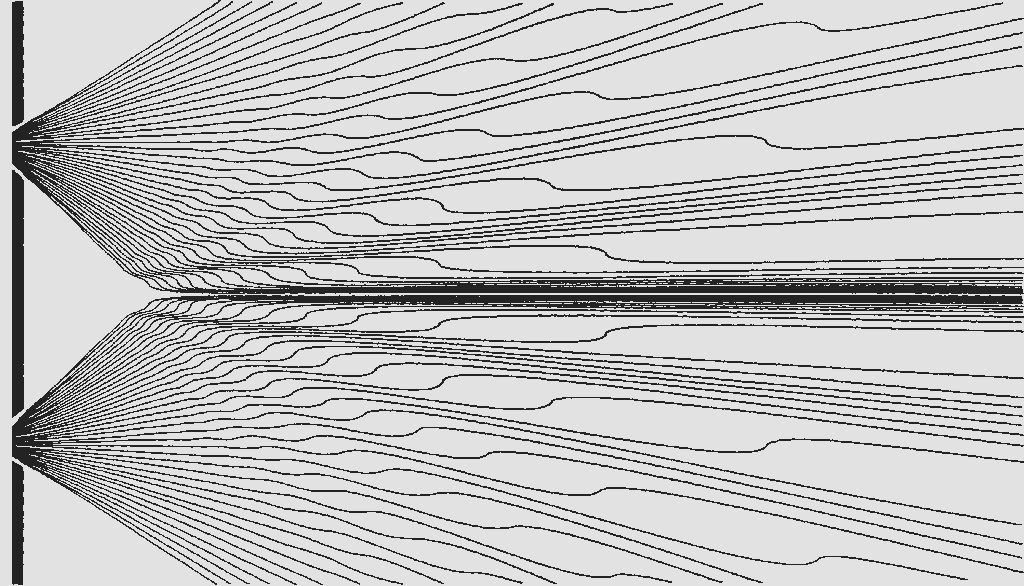If the particle has a single well-defined trajectory in the de Broglie-Bohm theory, how come that the interference pattern still appears even with single particles?
2 Answers
To elucidate Luc's answer somewhat, the Bohmian wave function still travels through both slits and causes an interference pattern, it's just the beables (particles) being guided by this wave that only travel through one slit. Because they're being guided by a wave that's exhibiting interference, the particle positions on the screen reflect this interference pattern.
There's a good animation of this here that might clear things up somewhat, or in image form:
 (found at this link from a Google image search; although this particular illustration I believe is by David Bohm originally)
(found at this link from a Google image search; although this particular illustration I believe is by David Bohm originally)
It's apparent from this, and interesting to note, that Bohmian trajectories don't cross. It's therefore possible to a priori determine which slit each particle passed through from its position on the screen. Measurement of a particle in transit affects its momentum however, so we still can't observe them taking one of these paths. Because of this, whilst this may be a good visual aid for some, it doesn't help over standard quantum mechanics beyond that. Outside the scope of your question, but you may be interested to know that there are other applications where calculating such trajectories are useful though as they can allow for more efficient quantum simulations - this is seen particularly in quantum chemistry.
If anything's not clear or you have any follow-ups, please feel free to ask.
-
1$\begingroup$ but we know that the moment we measure the particles at double slit, the interference pattern collapses. How is this explained by Bohmian mechanics. Even if you say we are messing with the momentum of the particle, then the particle must end randomly on the screen, but it ends up as though it came straight from the slit as a classic particle. How is this explained by Bohmian mechanics. $\endgroup$– user218113Commented Jan 11, 2019 at 7:21
The wave function of Bohmian mechanics is the same object obeying the same equation as in usual QM, so we get interference on the observation screen. Then each particle starts from slightly different positions, which we do not know, and that makes some pass through one slit and others through the other slit. Finally, it is an assumption [*] of Bohmian mechanics that this unknown particle position has a probability density given by the modulus square of the wave function, thus reproducing the usual prediction.
[*] Some authors have claimed to demonstrate that result, in an analogue of Boltzmann H-theorem.
-
$\begingroup$ So in this view, one particle doesn't fly through both slits at the same time, but each particle flies only through one slit, correct? $\endgroup$ Commented Oct 2, 2017 at 22:47
-
$\begingroup$ @safesphere That's correct. I've created a separate answer to try to clear it up a bit better for you. $\endgroup$ Commented Oct 3, 2017 at 0:21
